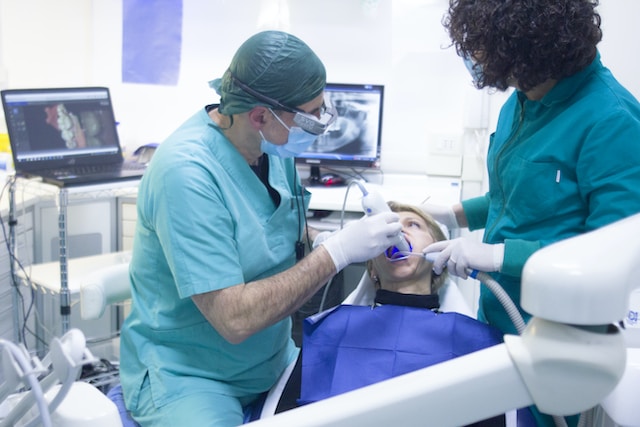An interesting article titled “Risk Factors for Delayed-Onset Infection after Mandibular Wisdom Tooth Extractions” written by A.M. Smith et al., appeared in Healthcare in 2023. The article investigated the risk factors for delayed-onset infection (DOI) after lower wisdom teeth extractions.
Delayed-onset infection (DOI) is a potential complication of wisdom tooth extraction that occurs one to four weeks after surgery. Even with precautions, such the use of antibiotics and not smoking and following good oral hygiene after surgery delayed-onset infection can occur with a reported incidence from 0.5% to 1.8%. Prior studies have shown that the depth and the tilt of the tooth axis of the lower wisdom tooth are risk factors for local delayed-onset infection and the development of delayed-onset infection is related to the space distal to the second molar. The authors of the current study sought to identify clinical and radiological features associated with DOI by performing both univariate and multivariate analyses.
In the study the authors explored the incidence and risk factors for DOI in patients with lower wisdom teeth extracted at Kagawa University Hospital from April 2015 to June 2022. The authors included patients who were older the 16 and had a wisdom tooth extracted. The authors exlcluded patients who had insufficient medical records, had a 30-mm or greater lesion around the wisdom tooth shown via X-ray, did not have any panoramic images taken, had a lesion present other than a follicular cyst along with several other factors. The authors had 1,400 patients enrolled in the study. The wisdom teeth surgeries The surgeries were performed with the patient under local anesthesia. An antibiotic (amoxicillin 250 mg, or clarithromycin 200 mg for patients with penicillin allergy) and a nonsteroidal anti-inflammatory drug or acetaminophen for pain was perscribed. One week after surgery the sutures were removed.
The authors found DOI occured in 16 of the 1,400 patients giving an incidence of 1.1%. Univariate analyses showed that the development of DOI was significantly associated with the Winter classification, position, hypertension, and hemostatic agent use. A multivariate logistic regression analysis demonstrated that position, hypertension, and hemostatic agent use were significantly associated with DOI development. The authors thus found that the position of the wisdom teeth can be a risk factor for DOI and impacted or partially erupted wisdom teeth can increase the risk. The authors found that more complex extractions can lead to an increased DOI. The authors found that the patiets medical history such has heart diseased can increase the risk of DOI. The authors found that younger patients are at an increased risk of DOI. The authors also found that hemostatic agent use such as epinephrine can increase the risk of DOI.

Photo by Quang Tri NGUYEN on Unsplash
The authors feel that the are several items patients can do to help decrease the risk of DOI. The study concluded that the risk of DOI can be reduced by taking steps to minimize the risk factors listed above. This includes not smoking, practing good oral hygiene, following the surgeon’s post operative instructions, and having wisdom teeth extracted by a qualified dentist or oral surgeon. The authors mentioned several study limitations which included having the patient population retrospectively from a single hospital, different level of surgical experience by those who performed the extractions, and not having an established suture protocol. The authors state:
“The results of this retrospective study of 1400 cases demonstrated that hypertension, the position of the wisdom tooth, and the use of a hemostasis agent were significantly associated with the development of a DOI.”
In the future additional prospective studies could help further shine light on DOI after wisdom teeth surgery.
